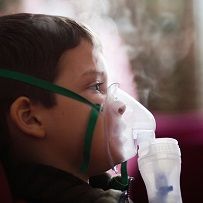Article
Children with “Hard-to-Control†Asthma Require Specific, Tailored Treatment
Author(s):
Using data from the Inner City Asthma Consortium, researchers from the Ann & Robert H. Lurie Children’s Hospital in Chicago were able to distinguish asthmatic children by the degree to which their condition could be controlled, and to make recommendations for more difficult cases.
between the ages of 6 and 17, researchers from the Ann & Robert H. Lurie Children’s Hospital in Chicago were able to categorize the severity of urban children’s asthma based on how they responded to standard treatment.
The majority of patients were African American or Latino, and the data used was from the National Health Institute’s (NIH) Inner City Asthma Consortium studies. The selected study group is important because, according to the NIH, asthma predisposition in inner-city populations is disproportionately high.
Fourty-four baseline metrics were examined in order to create the designations, chiefly allergies, nasal irritation, and responsiveness to bronchodilators. Based on the original assessments, 37.5% of patients were deemed to have “easy-to-control” asthma, whereas 40.9% were “hard-to-control.” The remaining 21.6% of children observed could not be placed distinctly in either category.
The researchers observed each case over the course of a year, and found that adherence to national guidelines and regular medication that benefitted the easy-to-control group had little effect on those with hard-to-control asthma. The hard-to-control population, however, was twice as responsive to bronchodilator treatment as the easy-to-control group.
Allergies and nasal irritation were identified as greater risk factors for the hard-to-control patients, who saw an increased level of exacerbations than their counterparts. As such, the study authors recommend that such allergic and nasal irritations be treated as an element of asthma control, rather than be seen as separate considerations.
The research highlights the need to specifically and closely tailor treatments based on the severity of a patient’s condition. “Our study found striking differences in how children with asthma respond to treatment, and these were associated with clinical factors that can be identified from the start,” said Jacqueline Pongracic, MD, lead author of the study, in a press release.
The study also pointed to seasonal trends within the difficult-to-control asthma patients. Already-heightened exacerbation rates spiked in the spring and fall, and symptoms were elevated across the board, day and night, particularly in colder months. Pongracic recommends monitoring to determine the need for higher-dose treatments, or potentially the assistance of allergy specialists.
The study was funded by the NIH and published in the October issue of the Journal of Allergy and Clinical Immunology.
Related Coverage:
Asthma: Some Patients Need More Instruction
Asthma Hospitalization Risk Dependent on Controller Treatment
Natural Compound in Berries (and Yes, Wine) Inhibits Respiratory Inflammation






